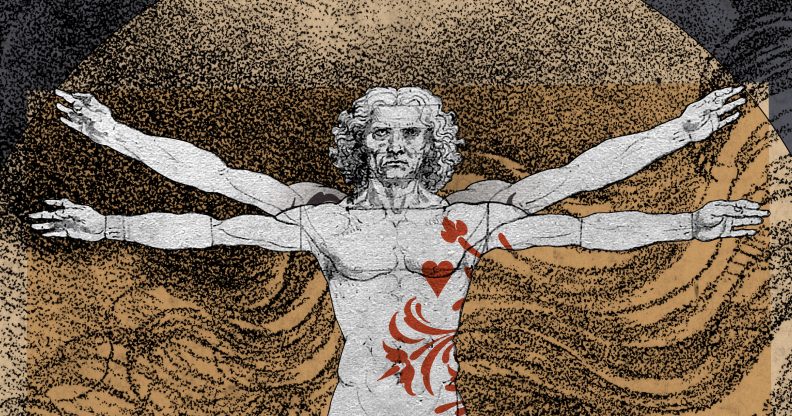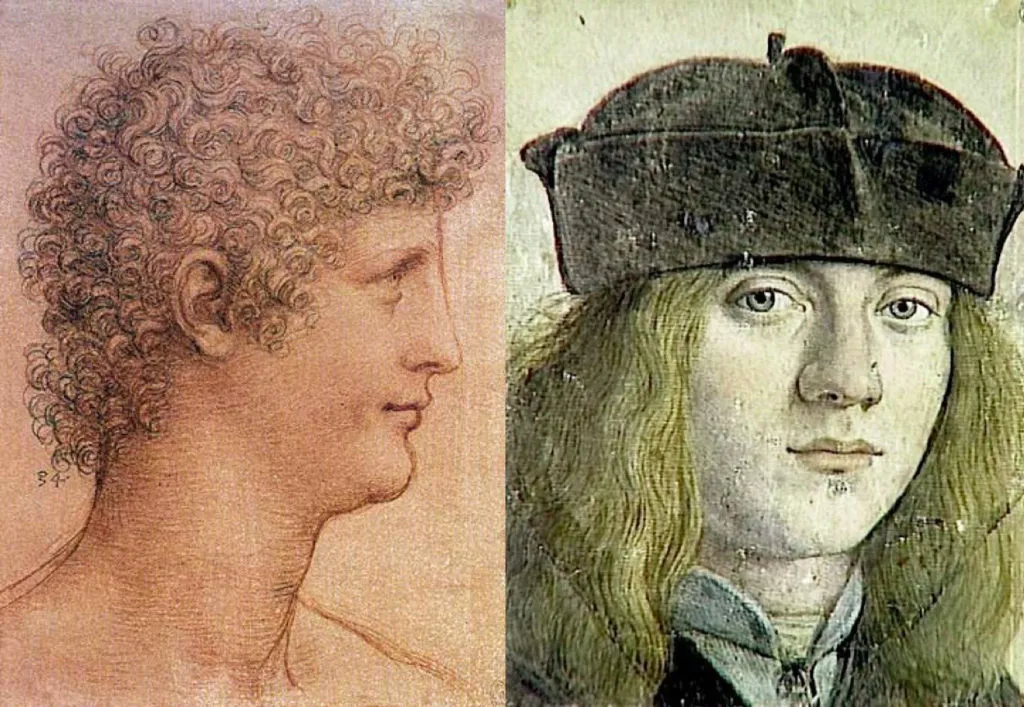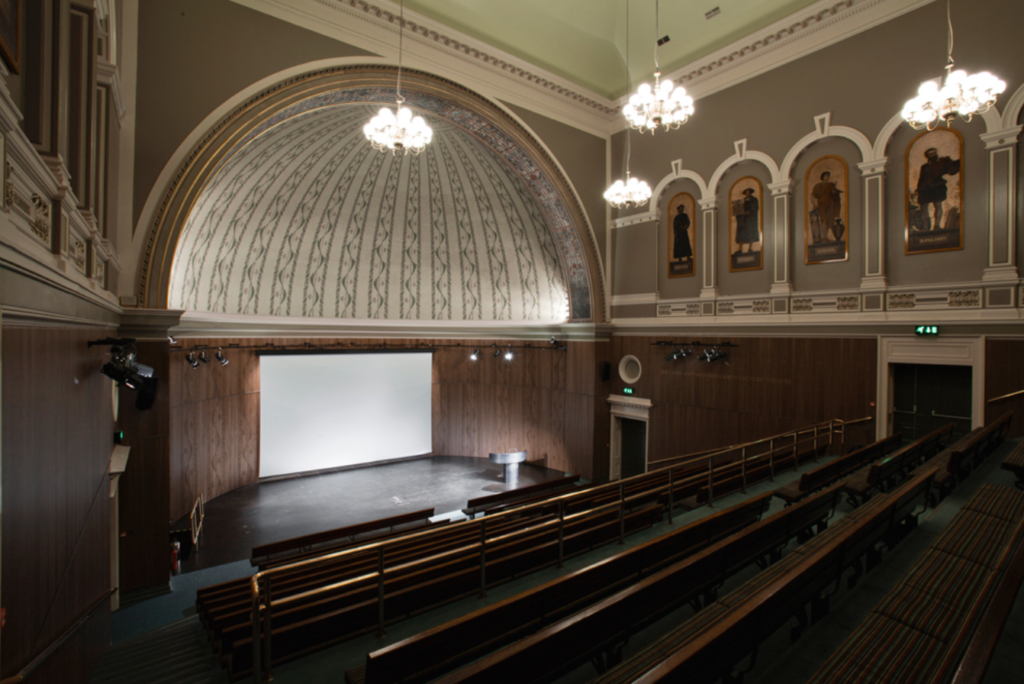Exploring Leonardo da Vinci’s sexuality through opera on the 500th anniversary of his death

The sexuality of Leonardo da Vinci will be explored in a groundbreaking opera at London’s Victoria and Albert Museum. (Supplied)
The sexuality of Leonardo da Vinci will be explored in a groundbreaking opera at London's Victoria and Albert Museum. (Supplied)
The creators of a new opera at the London V&A about Leonardo da Vinci’s sexuality share their insights into creating the piece.
Was Leonardo da Vinci, one of the world’s greatest geniuses, a gay man?
The question came up for us while creating our new opera Leonardo for the V&A. His sexuality been debated by critics, academics and even Sigmund Freud.
While there is no definitive answer, the majority of scholars agree that he very likely had intense romantic, even possibly sexual, relationships with other men. Does that even matter?
We think so.
Leonardo da Vinci and his relationship with two of his apprentices remains a mystery.
This year marks the 500th anniversary of Leonardo’s death.
There have been numerous exhibitions and events, but few of them reveal much about the private world of the man behind some of the world’s most famous artworks and scientific discoveries.
Opera is the perfect medium for exploring passions, desire and the unconscious.
We decided, therefore, to skip over the Mona Lisa and instead dig deeper into Leonardo’s emotional world, psyche and sexuality.
We soon decided to focus on Leonardo’s relationship with two of his apprentices: Salai and Francesco Melzi.

Portraits of Salai (L) and Melzi. (Supplied)
Revealing snatches of communication or about these young men can be found in Leonardo’s personal notebooks, which form the basis for our operatic text.
We’ve expanded upon these using other sources from 16th-century Italy that speak more openly about same-sex attraction.
The charged triangular dynamic between these three fuels the dramatic momentum of the opera.
The beautiful Giacomo Caprotti, nicknamed Salai (‘little devil’) by Leonardo, moved into the artist’s household aged 10 as an apprentice and stayed by his side for nearly 25 years.
Records show that the boy was mischievous and a thief, traits that brought out an affectionate frustration from his master.
As Salai grew into a beautiful young man, Leonardo spent money on gifts for his protégé.
The tempestuous, working-class Salai infuriated his master but also had him wrapped around his finger.
Were they close friends? Companions? Lovers? Perhaps all three.
There are few hard facts that definitely prove or disprove Leonardo’s sexuality.
Unlike the working-class Salai, Francesco Melzi was born into a family of Milanese noblemen.
He moved into Leonardo’s household as a youth of 14 or 15, more than a decade after Salai was taken in.
Leonardo trained Francesco in painting and the boy responded by becoming a faithful assistant and secretary (while also being quite beautiful to look at).
Many agree that was a surrogate son to Leonardo who went on to inherit the majority of his estate.
Despite these two close male bonds, there are few hard facts that definitely prove or disprove Leonardo’s sexuality.
Polymath’s brief time in prison offers clue to his sexual identity.
Using modern constructions like ‘gay’ is a challenge when discussing people who lived 500 years ago.
One piece of indisputably public evidence, however, dates from 1467, when Leonardo was 24 and found himself formally accused of sodomy, along with a number of other men, for consorting with a 17-year old alleged sex worker.
During this period in Florence, a group called the Officers of the Night regulated sexual morality and sources were able to drop anonymous accusations into public boxes to call out people breaking sexual laws.
Leonardo may have spent a brief period in prison, he may have faced charges in court, or they may have been dropped altogether for lack of evidence.
The final outcome of the charges remains unclear and the accusations have to be taken in context.
At this time in Renaissance Florence, it was common for adult men to have relations with adolescent boys.
The practice, though illegal, was a sort of open secret widely understood in certain circles.
In fact, homosexuality was so widespread in Renaissance Florence that the term “florenzer” became German slang for “gay”.
Leonardo remained unmarried, surrounded by male companions .
However, when they reached their 30s, most men would then go on to marry.
What’s unusual in Leonardo’s case is that he remained unmarried and instead created a home-life surrounded by male companions.
In the case of Salai, that was a relationship that spanned more than two decades.
This doesn’t necessarily prove anything, but it hasn’t stopped people trying to draw final conclusions.
An infamous essay by Sigmund Freud psychoanalyses Leonardo based on his drawings and journals, leading him to conclude that he surpessed his homosexual desires and likely remained celibate.

Leonardo notebooks. (Supplied)
Canadian writer Elizabeth Abbott reaches a similar conclusion and suggests the distress of the sodomy case led Leonardo to become something of a sexual recluse, keeping his desires closely hidden away.
The topic is clearly one of enduring intrigue and fascination and this has been reflected in how the opera comes to life onstage.
In the V&A’s beautiful Grade-I listed lecture theatre, we see the three characters appear as if to deliver a lecture on Leonardo.

The V&A lecture theatre. (Supplied)
What unfolds is instead a series of increasingly emotional episodes that explore Leonardo’s charged relations with the two apprentices.
We see the push and pull between Leonardo and Salai as their intimacy grows; we see that bond change once the ‘new boy’, Melzi, arrives and achieves a favoured position as heir to the estate and keeper of Leonardo’s legacy.
The piece has been created in consultation with two leading Leonardo experts, so we stay as close to the facts as possible.
Slide projections hint at and signpost unconscious intentions and desires.
While the opera doesn’t come to any new conclusions about Leonardo’s sexuality, we hope that it does bring people closer to the contradictions and tensions of the real, flesh-and-blood man the world’s most iconic art.
Leonardo is the much-anticipated second opera from acclaimed composer Alex Mills and takes place at the Lydia and Manfred Gorvy Lecture Theatre in South Kensington, London, on November 9 and 10. Click here for more information and tickets.

